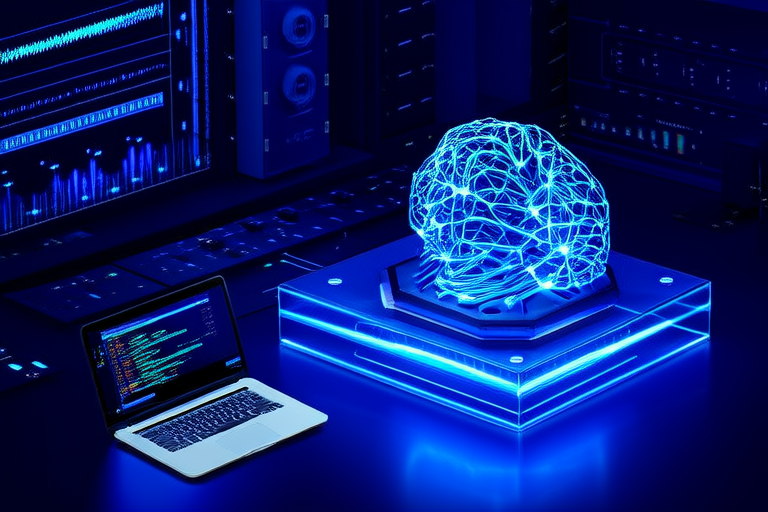From Algorithms to Applications: Exploring the Intersection of Machine Learning and Deep Learning
1. Introduction
Machine learning (ML) and deep learning (DL) are two pivotal branches of artificial intelligence (AI) that have revolutionized numerous industries. Machine learning refers to the development of algorithms that enable systems to learn from data and make predictions or decisions without being explicitly programmed. Deep learning, a subset of machine learning, utilizes neural networks with multiple layers to model complex patterns in data. These fields intersect in ways that amplify their capabilities, offering solutions to problems once deemed insurmountable.
The synergy between ML and DL is crucial because it allows for more sophisticated problem-solving, particularly in areas requiring pattern recognition and predictive analytics. Real-world applications, such as image and speech recognition, natural language processing, and autonomous driving, demonstrate the power of combining these approaches. Understanding their relationship is essential for leveraging their full potential in innovation and progress.
2. Foundations of Machine Learning
Machine learning involves creating models that can learn from data. It comprises three core components: data, models, and algorithms. Data serves as the input for training models, while algorithms define the rules used to process this data. Models, in turn, represent the learned patterns that can be applied to new data.
There are several types of machine learning, each suited to different tasks:
- Supervised learning: Involves training models on labeled data, where both input and output are known. Common applications include classification and regression tasks.
- Unsupervised learning: Utilizes unlabeled data to discover hidden structures or patterns. Clustering and dimensionality reduction are typical use cases.
- Reinforcement learning: Employs trial-and-error methods to optimize actions in an environment to maximize cumulative rewards. This approach is widely used in robotics and game playing.
Traditional machine learning techniques, such as decision trees, support vector machines, and k-means clustering, remain valuable tools for specific applications where simpler models suffice.
3. Foundations of Deep Learning
Deep learning extends traditional machine learning by employing neural networks with many layers. These networks consist of interconnected nodes (neurons) organized into layers, including input, hidden, and output layers. Each neuron processes information from the previous layer and passes it to the next, allowing the network to model intricate relationships within the data.
Key concepts in deep learning include:
- Neural networks: Composed of layers of interconnected neurons that process data through weighted connections.
- Activation functions: Non-linear functions that introduce non-linearity into the model, enabling it to learn complex patterns.
- Backpropagation: An algorithm used to adjust the weights of the network based on the error in predictions, facilitating learning.
The advent of graphical processing units (GPUs) and large datasets has been instrumental in advancing deep learning. GPUs provide the computational power necessary for training complex models efficiently, while large datasets ensure that these models can generalize effectively.
4. Intersection of Machine Learning and Deep Learning
Machine learning and deep learning complement each other in several ways. Traditional machine learning techniques excel at handling structured data and tasks with clear patterns, whereas deep learning excels at unstructured data, such as images and text. By combining both approaches, systems can leverage the strengths of each method, leading to more robust and versatile solutions.
Common challenges in both fields include overfitting, underfitting, and the need for vast amounts of labeled data. Collaborative efforts can address these issues, such as using transfer learning to adapt pre-trained models to new tasks or applying regularization techniques to prevent overfitting.
Examples of synergy include:
- Using feature extraction techniques from traditional ML to preprocess data before feeding it into deep learning models.
- Employing ensemble methods that combine predictions from multiple models, including both ML and DL approaches.
5. Real-World Applications
The intersection of machine learning and deep learning has made significant impacts across various industries:
- Healthcare: Predictive models help in diagnosing diseases, personalizing treatment plans, and managing patient care.
- Finance: Fraud detection, risk assessment, and algorithmic trading benefit from advanced analytics.
- Autonomous Vehicles: Computer vision and sensor fusion rely on deep learning for navigation and decision-making.
Case studies illustrate the success of these technologies. For instance, Google’s DeepMind developed AlphaGo, which defeated world champions in Go, showcasing the potential of deep reinforcement learning. Ethical considerations, such as privacy concerns and bias in algorithms, must also be addressed to ensure responsible deployment.
6. Future Directions
The future of machine learning and deep learning lies in continued integration and innovation. Emerging technologies like federated learning, transfer learning, and hybrid models will play critical roles. Federated learning allows models to be trained across decentralized devices, preserving privacy. Transfer learning enables the adaptation of pre-trained models to new domains, reducing the need for extensive labeled data.
Interdisciplinary collaboration will be vital for advancing these fields. Experts from computer science, mathematics, psychology, and ethics will work together to develop more intelligent and ethical AI systems. The goal is to create technologies that not only solve problems but also improve human lives sustainably.
7. Conclusion
This article has explored the concepts, foundations, and applications of machine learning and deep learning, highlighting their intersection and mutual benefits. By understanding how these fields complement each other, we can harness their full potential for innovation and progress. The synergy between machine learning and deep learning is crucial for addressing complex challenges and driving technological advancement across industries.




